Latest posts by (see all)
- The Best Things to Do in Tulsa - June 26, 2020
- The Most Interesting Things to Do in Springfield Mo - June 15, 2020
- Best Things to Do in Salt Lake City - May 26, 2020
- 10 Best Websites for Playing Online Games - May 22, 2020
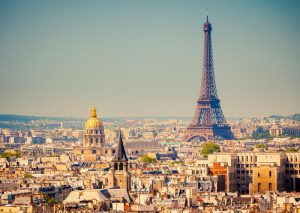 Paris … The city of lovers, the symbol of France, the city of revolutions and the city of dreams. Hardly in France as in any other country in the world it is possible to find such a delightful corner filled with the spirit of love and romance. Here, every street, every courtyard and a corner is saturated with a special charming atmosphere of the French spirit. At all times, great artists sought inspiration here, and poets and writers sang Paris in their works and composed legends about it.
Paris … The city of lovers, the symbol of France, the city of revolutions and the city of dreams. Hardly in France as in any other country in the world it is possible to find such a delightful corner filled with the spirit of love and romance. Here, every street, every courtyard and a corner is saturated with a special charming atmosphere of the French spirit. At all times, great artists sought inspiration here, and poets and writers sang Paris in their works and composed legends about it.
The extraordinarily beautiful city of Paris, which history dates back more than 2000 years, is located on the banks of the Seine. But do not think that this city breathes old times and strikes a look exclusively picturesque natural landscapes. There is everything the traveler can dream about: romance, adventure, entertainment, excellent opportunities for fashion shopping and unusually tasty French chocolate.
Contents
- Place to visit number 1: Big Ben
- Place to visit number 2: The Buckingham Palace
- Place to visit number 3: Westminster Abbey
- Place to visit number 4: Hyde Park
- Place to visit number 5: The Sherlock Holmes Museum
- Place to visit number 6: The National Gallery
- Place to visit number 7: Trafalgar Square
- Place to visit number 8: The Courtauld Institute of Art
- Video
Thing to do number 1: Have a walk round the Tuileries Garden
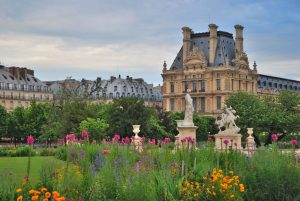 The central garden of Paris is located between Rue de Rivoli, Place de la Concorde, the Seine and the Louvre. It is built with all the architectural rigor, the trees are planted in straight rows, geometry prevails everywhere. In the 17th century such a style was used to organize many parks, as architecture proclaimed the power over nature.
The central garden of Paris is located between Rue de Rivoli, Place de la Concorde, the Seine and the Louvre. It is built with all the architectural rigor, the trees are planted in straight rows, geometry prevails everywhere. In the 17th century such a style was used to organize many parks, as architecture proclaimed the power over nature.
In the even streets of the Tuileries garden, you can find many statues that appeared here in the second half of the 20th century. In the shadow of thousands of trees of the park one can see many Parisians and guests of the capital. There is everywhere a peaceful, friendly, relaxed atmosphere that permeates the air. People lie directly on the green flat lawns.
In general, the Tuileries garden is a must visit:
- There is everywhere a peaceful, friendly, relaxed atmosphere that permeates the air. People lie directly on the green flat lawns.
- Visit there will make it possible to understand what the spirit of modern France is,
- The garden will show Parisians in their best form, among trees, outside the city vanity.
Interesting: The total area of this park is 25.5 hectares. Today the Tuileries Garden is one of the largest French parks.
Back
Thing to do number 2: Look at the Statue of Liberty
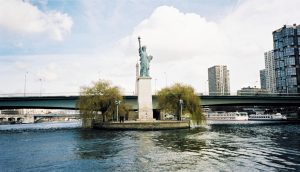 In order to see the Statue of Liberty personally, it is not necessary to fly to New York: the “younger sister” of the famous monument, located on the Swan Island in Paris, is quite capable of replacing it – if you are ready to be satisfied with a copy on a scale of 1: 4.
In order to see the Statue of Liberty personally, it is not necessary to fly to New York: the “younger sister” of the famous monument, located on the Swan Island in Paris, is quite capable of replacing it – if you are ready to be satisfied with a copy on a scale of 1: 4.
Here you will be able to learn more about the history of statue creation:
- It is well-known that the original of the Statue of Liberty was donated to the United States on behalf of the people of France. But its French counterpart was born thanks to US citizens – in 1884, before the official inauguration of a large statue, the collection of funds for a reciprocal gift began among the American diaspora in Paris.
- The enterprise was crowned with full and swift success, already in May, 1885, a plaster figure 11 500 m high was placed on the Parisian square of the United States – thanks to it 4 years later the statue that now adorns the Swan Island appeared.
According to the plan of the sculptor Auguste Bartholdy, the Parisian version of the Statue of Liberty was to look to the west – towards the “older sister”. To the annoyance of the author, the solemn opening of the monument was at the World Exhibition, for which the Eiffel Tower was built, and the Mayor’s Office of Paris found it inconceivable that the symbol of freedom turn its back to the new miracle of technology.
At that time it was supposed to dismantle the Eiffel Tower in a few years and then turn the statue face west. But the tower remained in place, and Bartholdi’s dream materialized only in 1937.
Interesting: The copy was deliberately made not the same as original: in the American version, the book held by the statue has figures 1776 (the year of the founding of the USA) and on the French analogue – 1776-1789 (in memory of the two great revolutions on different sides of the ocean).
Back
Thing to do number 3: Go to the Pompidou Center
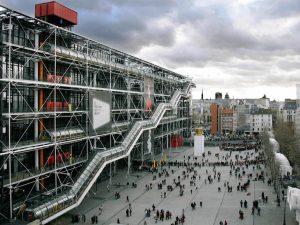 The National Center of Art and Culture named after Georges Pompidou (born in the Center national d’art et de culture Georges-Pompidou) is popular among the tourists. The Pompidou Center is a cultural center located in Paris, in the quarter of Beaubourg. The center was opened by the order of President Georges
The National Center of Art and Culture named after Georges Pompidou (born in the Center national d’art et de culture Georges-Pompidou) is popular among the tourists. The Pompidou Center is a cultural center located in Paris, in the quarter of Beaubourg. The center was opened by the order of President Georges
Pompidou in 1977 with the aim of studying and supporting contemporary art in various areas (music, visual arts, dances and others).
The complex includes:
- the Museum of Modern Art,
- exhibition and concert halls,
- a rich library,
- the Institute for the Study and Coordination of Acoustics and Music.
Center Pompidou takes the third place among the sights of Paris by the number of visitors – after the Eiffel Tower and the Louvre Museum.
At the very beginning of his presidential term, Georges Pompidou took a course to modernize the country, and such a course needed a bright and memorable symbol. Pompidou decided not to make high-profile statements, to make deliberately impossible promises, and acted much wiser – decided to create an architectural object that will go down in history. He announced a competition for the most original project of the Museum of Modern Art, in which 681 works from 49 countries took part.
Most of all, the French liked the idea of Renzo Piano and Richard Rogers – they proposed a building in which all communications and technical structures are put out perimeter, due to which the maximum area is freed. The project was adopted unanimously, and at midnight on December 31, 1977, a solemn opening ceremony was held. Under the battle of the clock, a fabric was wrenched from the building, and a real monster appeared before the eyes of the Parisians who were waiting for the arrival – all the elevators, escalators, pipeline and fittings were outside. The ventilation pipes were painted in blue, the water pipes in green, the electrical wires in yellow, and the escalators and elevators into red.
In the “Two in an empty Paris,” the Pompidou Center one of the heroes called “an architectural mutant.”
The Pompidou Center attracts tourists from all over the world not only with an unusual appearance, but also with an inner content.
There are 5 floors:
- On the first floor of the Center there is a cinema, in which film festivals, displays of the so-called art house cinema are often held.
- The second floor has a rich public library, containing millions of books and video files, among other things there is literature in Russian. All books are only available for reading in the reading room. There are screens for viewing video, as well as lingophones for listening to audio.
- The third and fourth floor is occupied by the Museum of Modern Art, a collection of which has about 60,000 works of art by more than five thousand authors. Presented areas are the following: painting, design, architecture, photography, installation, video and performance. More recently, an interesting exhibit appeared here – the original of one of the pages of the first comic book about the adventures of Tintin.
- On the fifth floor of the Center there is the Grande Galerie, where temporary exhibitions are displayed.
The indisputable advantage of the Pompidou Center is the availability of places where children can be left, and they will not be bored either. For small visitors art workshops work where your child will be able to learn painting lessons and modeling of clay.
After you have finished examining the exhibitions, climb to the very top, and you will see Paris as in the palm of your hand, from the hill of Montmartre to the Cathedral of the Notre Dame.
Interesting: The Square in front of the Pompidou Center is loved by artists, musicians, circus performers and wandering artists – there is more than one entertaining show here every day.
Back
Thing to do number 4: Entertain yourself in Aquaboulevard
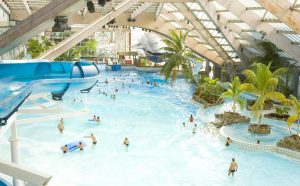 Aquaboulevard was built in 1989 in the heart of France. There are several beaches that are located under a roof in the open air.
Aquaboulevard was built in 1989 in the heart of France. There are several beaches that are located under a roof in the open air.
The main highlight of the water park is the attraction Baleine Jonas, which looks like a huge 30-meter whale. The idea of such a design belongs to Jacques-Yves Cousteau himself. In 1993, the blue giant was first seen by the audience and, it must be said that kids still like it most.
Aquaboulevard is a four-story complex, inside of which there is a huge number of all kinds of water entertainments and attractions. Tourists from all over the world dream to get here, and it’s no coincidence. There are a lot of pools with cold and
warm water and artificial waves, geysers, fountains, big and small slides, waterfalls. To make the rest really interesting and unforgettable you will be able with the help of:
- sauna,
- jacuzzi,
- solarium,
- balls and mattresses,
- canoes and many other adaptations and attributes.
There is a developed infrastructure. If you are hungry, you can visit McDonald’s, Trattoria Pizza & Pasta, Cafe Malongo, Tarte Julie, Upper Crust, Restaurant Grill Hippopotamus and other cafes and bars.
Interesting: With an area of 7000 square meters it is rightfully considered the largest park of water entertainment in Europe.
Back
Thing to do number 5: Visit the Disneyland Park
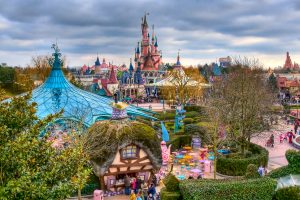 Disneyland Park is considered the oldest part of the park and is its heart. It includes five theme parks:
Disneyland Park is considered the oldest part of the park and is its heart. It includes five theme parks:
- Adventureland,
- Frontierland,
- Main Street USA,
- Discoveryland
- and Fantasyland, grouped around the Sleeping Beauty castle.
All parts of the park are connected by a mini-train, which runs in a circle with a minimum speed. But the views from its windows are pre-marvelous.
Adventureland
In Adventureland or the Land of Adventure, there is a pirate ship (Pirates of the Caribbean), an adventure island (Adventure Isle) with labyrinths, and on the branches of a huge tree the refuge of the Robinson (Swiss Family Robinson) is stretched. The most popular attraction of the Country of Adventure is the Indiana Jones slide, which attracts extreme lovers with triple “dead loops” back in a row.
Frontierland
In Frontierland or the Border Country, the roller coaster Big Thunder Mountain and the Phantom Manor ghost house are popular. In the Borderland, the spirit of the Wild West is hovering, and everyone can ride on Western-style steamships and meet with cowboys and Indians.
Main Street USA
On Main Street USA or the main US road, built in the style of an American city at the end of the 19th and the beginning of the 20th century, numerous restaurants and shops are lurking, and the final point of the road is the Sleeping Beauty Castle from where you can get to the rest of the Disneyland Park. From the local train station, narrow-gauge trains with locomotives are sent along a circular path around the park. You can also visit the hair salon in the same style.
Discoveryland
In Discoveryland or the Land of Discoveries, it’s worth the breeze to ride a Space Mountain roller coaster in the center of the park and visit the “The Lion King Legend” show, which is a 30-minute musical. Space Mountain is the fictitious future of Jules Verne, which can be reached by a quick catapult to the sky itself, from where the grinning moon takes you on a long and dangerous path through meteorites, nebulae, luminaries and similar mysterious glowing things.
Fantasyland
In Fantasyland all the attractions are adapted for children’s fairy tales – Snow White and the Seven Dwarfs, the flight of Peter Pan, the maze of Alice, the Journey of Pinocchio. This country is designed primarily for young visitors.
Interesting: In the second part of Disneyland, the theme park Walt Disney Studios Park, built in 2002, visitors are invited to look behind the scenes. For example, in studio Studio Tram Tour you can see some special effects, and the show Moteurs Action will acquaint spectators with stunt tricks.
Back
Thing to do number 6: Go to Cabaret Crazy Horse – the legendary amusement institution of Paris
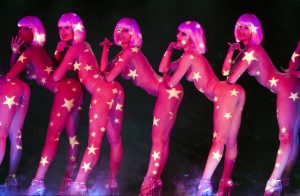 Despite its scandal reputation Crazy Horse Cabaret deserved the status of the cultural heritage of the state. Alain Bernardin created it in 1951, and since then the cabaret has not faded, but, on the contrary, has gained worldwide fame. Despite the external eroticism, the performances here are magical, and the creator himself intended to present to the audience, above all, a magic show, and not the opportunity to enjoy half-naked female bodies.
Despite its scandal reputation Crazy Horse Cabaret deserved the status of the cultural heritage of the state. Alain Bernardin created it in 1951, and since then the cabaret has not faded, but, on the contrary, has gained worldwide fame. Despite the external eroticism, the performances here are magical, and the creator himself intended to present to the audience, above all, a magic show, and not the opportunity to enjoy half-naked female bodies.
The viewer does not have a feeling of vulgarity – there is only admiration for the gracefulness of dancers, the art of stunt making and amazing effects. Directly striptease-representations intertwine with:
- performances of jugglers and clowns,
- illusionists and mimes,
- masters of fire and masters of the laser.
The dancers themselves perform enchanting acrobatic stunts.
Crazy Horse is located in the basement, bought by Alain Bernardin in the year of foundation. The owner himself personally designed furniture and other interior elements. His original works were sold at an auction before the reconstruction of the cabaret building. One of the symbols of the “Crazy Horse” – canape in the shape of the lips – was invented by the great Salvador Dali, inspired by the local performance.
Interesting: Many other fashion designers (Paco Rabanne, Karl Lagerfeld, Loris Azzaro) found it an honor to cooperate with the most famous institution and embodied the impressions of it in their works.
Back
Thing to do number 7: Visit the Parisian Playing Card Museum
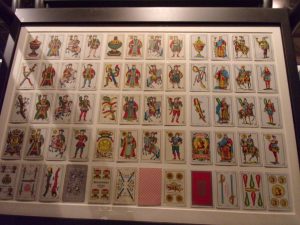 Playing cards is one of the oldest fun. The prevalence of card games can be envied by many sports – every second inhabitant of the Earth at least once in his life, but held a deck. With such popularity of playing cards, it is surprising that only 7 museums in the world are devoted to them, and only one of them has an honorary title. This is the Parisian Playing Card Museum – the best museum in Europe in 1999.
Playing cards is one of the oldest fun. The prevalence of card games can be envied by many sports – every second inhabitant of the Earth at least once in his life, but held a deck. With such popularity of playing cards, it is surprising that only 7 museums in the world are devoted to them, and only one of them has an honorary title. This is the Parisian Playing Card Museum – the best museum in Europe in 1999.
The Museum of Playing Cards is a representative of the “younger generation” of the Parisian museums. It was created in 1986 on the basis of two relatively modest private collections of the pre-war era. The organizers of the future museum could not find a room for a long time even for a small exhibition, until the mayor’s office of the Paris suburb of Issy-les-Moulinea came to their aid. Collections of playing cards shared with the local museum of local lore one of the most interesting buildings of the suburbs – the former mansion of Princes Conti.
Over the next 10 years, the museum has grown several times, and it was decided to build a separate room for it.
Museums are still connected: an avant-garde building of glass and concrete, where in 1997 the collections of playing cards moved, a covered gallery joins the old mansion, and both museums can be visited on the same ticket.
A thorough examination of all the halls can take many hours. The modern collection has almost 11 thousand exhibits, of which approximately 6500 are original samples of cards of all countries and eras. Among them there are very unusual:
- round in shape, fancifully painted cards from India;
- The Japanese cards, in which the shells of mussels were used instead of cards;
- Cards of the Muslim East with geometric ornaments instead of images of jacks, queens and kings;
- esoteric Tarot cards of the Italian Renaissance;
- National European cards with a reduced set of cards and unusual names of suits.
Interesting: In addition to the actual game packs, the museum features printing presses, typographical sets and other means of card production, as well as works of art related to gambling – paintings, posters, engravings, prints and even ceramics with images of gamblers’ leisure and various aspects of the game.
Back
Thing to do number 8: Enjoy shopping in the fashionable capital of France
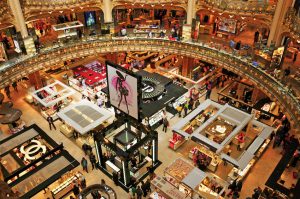 Paris has been always called the capital of high fashion. It was Paris that gave the world such talented designers designers as Chanel, Dior, Yves Saint Laurent. At different times in this city Kenzo, Versace and Armani were creating their masterpieces. Every year, the Paris Fashion Week is held here, which is considered the most authoritative in the fashion industry.
Paris has been always called the capital of high fashion. It was Paris that gave the world such talented designers designers as Chanel, Dior, Yves Saint Laurent. At different times in this city Kenzo, Versace and Armani were creating their masterpieces. Every year, the Paris Fashion Week is held here, which is considered the most authoritative in the fashion industry.
Due to the fact that Paris is now called the most “fashionable” city in the world, here there are the most famous boutiques and shops from world famous designers. Almost all boutiques and designer shops are located on the boulevard of Osman, which the Parisians call the “temple of shopping.” And although the prices in these boutiques are not the lowest, only here you can buy truly unique designer masterpieces, without doubting their authenticity and quality.
However, shopping in Paris is not just boutiques. In the capital of the world fashion there are a lot of department stores and modern shopping centers where you can buy goods at more democratic prices. Among them there are:
- Marks & Spencer’s,
- C & A,
- Bazar del Hotel de Ville,
- Le Bon Marche and others.
The flea market in Paris is also worth visiting. Contrary to popular belief, here you can buy not only junk and all trash, but also very valuable antiques, handicrafts, books or flowers. So, the Parisian market Creasjon Paris Bastille (the market of arts), the market of Saint-Ken e-Paris (antiques market) and the Gallery of Elsa Vanier (the market of designer ornaments) are famous throughout the country.
Interesting: It is noteworthy that twice a year (in summer and in winter) there are traditional sales with prices for goods in department stores reduced by 30-70%.
Back